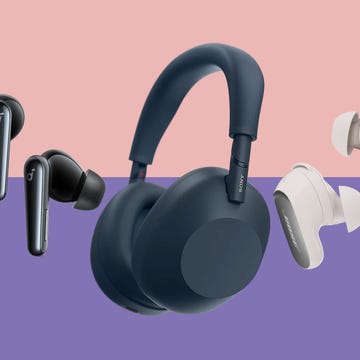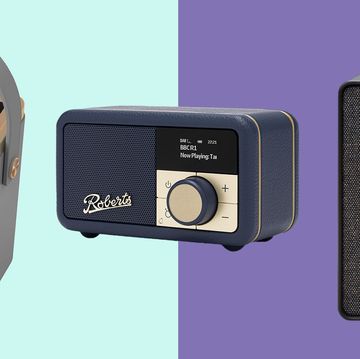If you’ve arrived at this article, you’ve probably heard about the London-based startup Nothing. It’s among the buzziest tech companies right now, making unique products with a sci-fi look that prioritises minimalism and transparency.
I’m a fan of the brand’s focus on design and attention to detail, and you might have noticed the Nothing smartphones in Good Housekeeping’s guide for the best affordable phones and its earphones in our pick of the best true wireless earbuds. These make for ideal tech gifts and are great if you want something that looks different from what everyone else owns.
The brand has revamped its audio lineup for 2024 too, launching the £129 Nothing Ear – to replace 2023’s Nothing Ear (2) – and a cheaper Nothing Ear (a) variant for £99. I’ve been testing out both new pairs for the last month, comparing them to each other and leading rivals.
What to read next
Whether you’re buying for yourself or picking a present, there are some key differences to note:
Nothing Ear (a) vs Nothing Ear (2024): What’s the same?
Firstly, the similarities. Both of these models are AirPods-esque true wireless earbuds with impressive sound quality, active noise-cancellation, a transparency mode and a “bass enhance” feature.
I’ve been using them connected to my iPhone 15 Pro and the Nothing Phone (2), so I can confirm they work well whether you’re on an iPhone or Android.
Whichever one you pick, they’re small and comfortable to wear for a long time and both earbuds are splash-resistant with the same IP54 rating.
They have a similar semi-transparent design with “squeeze” controls on each earbud that can be customised in the Nothing X smartphone app (available on Android and iPhone).
Design
The Nothing Ear and Nothing Ear (a) differ in a few notable design aspects. The flagship model features a more premium build with an IP55-rated case, offering better dust and water protection. This case is slim and pocketable and also has wireless charging support.
In contrast, the Ear (a) has a different case design – reminiscent of a pill box – with a lower IPX2 rating providing minimal protection from water splashes. It also doesn’t have wireless charging.
While the Ear and Ear (a) come in either white or black shades, the Ear (a) also introduces a fun yellow colour option. As you can see, this is the colour of the Ear (a) I have on test.
Sound quality
In general, the sound quality is similar between the two pairs. However, the flagship Ear pair has the edge here.
It has a ceramic diaphragm rather than the plastic driver of the affordable model – this results in a more natural sound.
I can hear the difference only in a direct comparison. Not everyone will be able to pick between them, as the audio reproduction is excellent on both.
App features
However, a personalised hearing test in the app is exclusive to the Ear, and that’s a terrific feature for adapting the experience to your unique ears.
I find it makes a real difference and isn’t a mere gimmick – it can help me hear the textures and frequencies I might have otherwise missed in my playlists.
For audiophiles, there’s also an in-depth “advanced equaliser” in the app for complete customisation over the audio experience – this is also only available on the more expensive pair.
Noise-cancellation
While both earbuds deliver a noise-cancellation feature, you might wonder if the pricey one is more effective. In my experience, there isn’t a noticeable difference.
Nothing advertises both pairs as reducing ambient noise levels by 45 decibels. In my testing, both did a good job of dialling down background chatter in the office and at a coffee shop and can do a good job with low-frequency rumbles from a train.
They’re reliable, but the best noise-cancelling headphones can do even better. The transparency (or awareness) mode is functional, but not as good as what’s on offer from Apple or Bose.
Verdict: Nothing Ear (a) vs Nothing Ear (2024)
After all that, which one should you pick? For most of us, I think the Nothing Ear (a) is a fantastic value option.
They deliver a rich and detailed sound from a comfortable design, and I’m a fan of its vibrant yellow colourway. If you’re picking up a present, this is the pair I’d suggest going for, and it has the benefit of more battery life.
However, the Nothing Ear is my favourite pair of mid-range buds right now, packing in loads of extra features for £30 more.
The additional audio customisations, hearing test and better charging case make it a great option if you want the buds to be a bit more personal and deliver some of the most impressive sound quality in wireless audio.
Simon Cocks is Good Housekeeping UK’s Technology Editor, overseeing tech shopping content and strategy for the title. He previously also worked across other titles including Esquire UK, Digital Spy, Men’s Health UK and Women’s Health UK.
Simon specialises in testing the latest smart gadgets, home entertainment gear, headphones, speakers, portable chargers, radios, e-book readers and smartphones. He's reviewed top tech products from brands including Google, Apple, Amazon, JBL and Bose.
A magazine journalism graduate from Kingston University in 2014, Simon also worked on the Discovery and Silkroad inflight magazines. He then gained experience writing about entertainment at SFX and Total Film. He also contributed reviews and interviews to TwitchFilm (later ScreenAnarchy), CultBox and Frame Rated.
He joined Good Housekeeping UK as the Editorial Assistant for Special Projects and was part of Good Housekeeping’s Consumer Affairs Team between 2014 and 2019. In this role, he conducted price comparison research, wrote detailed household and money-saving advice guides and edited thousands of in-depth reviews for the Good Housekeeping Institute.
He has focused on technology and gadgets since 2020, where he started by testing out power banks and instant cameras. He writes reviews, roundups, news articles and deals updates, and also covers top tech deals during sales like Amazon Prime Day, Black Friday and Cyber Monday.
When not testing out the latest gizmos, you’ll find Simon either catching up with the newest releases at his local cinema or out shooting with his beloved compact camera.
You can follow Simon on Instagram, on Bluesky, on LinkedIn and on Threads.

















